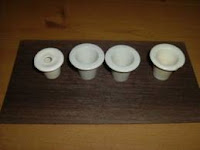CALLIGRAPHY
To help you create beautiful writing:
The art of calligraphy is as old as writing itself and is concerned with the visual expression of words. Major influences have been the classic capital letters carved by the Romans on columns and buildings and the beautiful scripts produced by monks and scholars prior to the invention of the printing press.
 |
| Letter 'P' - The Book of Kells |
Calligraphy is a rewarding activity for all ages, there are few rules but don’t expect to become a calligrapher overnight, as the old adage goes, ‘Practice makes perfect’. My first rule would be…Enjoy the experience and have fun making your mark! Basically there are three pen types commonly used for calligraphy: cartridge pens, markers and dipping pens. All have their uses and no matter what you choose the process for learning the various style and construction of letters is the same.
I recommend buying these basic materials.
- 2 pen-holders, (I use speedball – garnet)
- Speedball C2 and C4 nibs and
- Speedball – signature dipping ink.
- mechanical pencil (.05mm)
- 18” (40cm) see thru ruler,
- Eraser (Staedtler-mars plastic)
- A4 Bond paper pad.
Posture is critical if you are to write neatly and for any length of time. Try writing on a sloping surface but remember to keep the work directly ahead of both eyes and not to the side. Rest your writing hand on a piece of clean paper or blotting paper to stop perspiration getting on to the writing surface and making a greasy spot which the ink will resist. As a young school girl I took my regular turn of being ‘Ink Monitor’. This entailed the morning ritual of filling the beautiful little ceramic ink-wells which sat in a hole on the desk top: the writing surface was of course sloped at about 30 degrees. Just right for practicing copper-plate which was the standard hand writing style of the period.
 |
| Desk with inkwell niche |
 |
| Ceramic inkwells |

